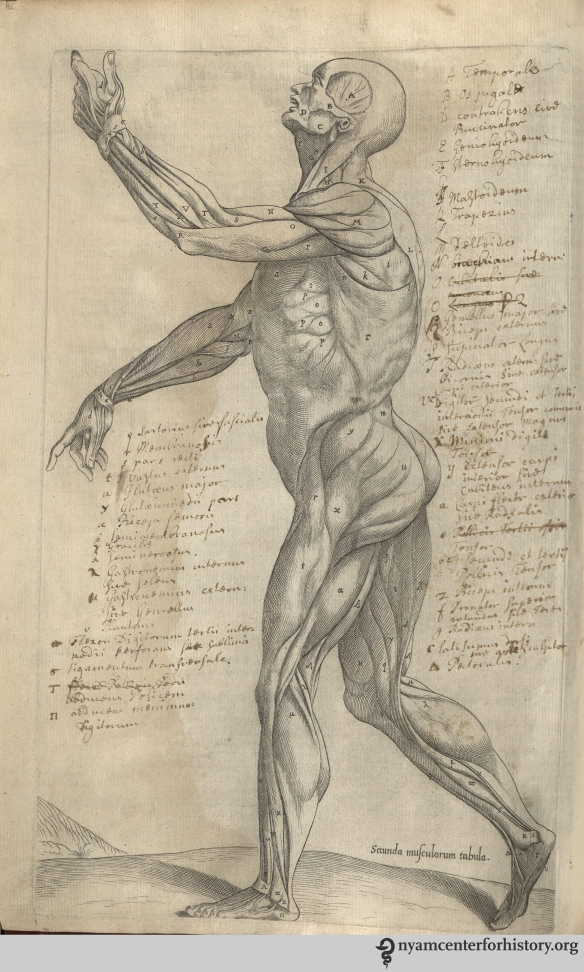By Danielle Aloia, Special Projects Librarian
July 30 marks the 50th anniversary of the establishment of Medicare. But getting to the signing of the Social Security Amendment of 1965, which created Medicare, was a long road.
In the 1910s and 1920s, numerous reports, recommendations, and programs advocated the development of a national health system, especially after the United Kingdom adopted National Health Insurance in 1911. Due to opposition from the American Medical Association (AMA), labor unions, and insurance companies these recommendations were never fully accepted. However, there was consensus that something needed to do be done to protect the poor from the burden of healthcare costs.
As the charts below show, in 1929 citizens spent over three billion dollars on health care. The next chart shows where that money was spent. As noted by William Foster, chairman of the Committee on Public Health of the National Advisory Council on Radio in Education, “We now spend every year for medical care over three billion dollars, yet only one dollar out of every thirty goes to public health services for the prevention of disease.”1
![From: Foster, William Trufant, U.S. Public Health Service. Doctors, dollars, and disease. [New York]: Public Affairs Committee, Inc.; 1937.](https://nyamcenterforhistory.files.wordpress.com/2015/07/foster_doctorsdollarsanddisease_1937_chart6_watermark.jpg?w=584&h=387)
From: Foster WT, U.S. Public Health Service. Doctors, dollars, and disease. [New York]: Public Affairs Committee, Inc.; 1937.
![From: Foster, William Trufant, U.S. Public Health Service. Doctors, dollars, and disease. [New York]: Public Affairs Committee, Inc.; 1937.](https://nyamcenterforhistory.files.wordpress.com/2015/07/foster_doctorsdollarsanddisease_1937_chart5_watermark.jpg?w=584&h=489)
From: Foster WT, U.S. Public Health Service. Doctors, dollars, and disease. [New York]: Public Affairs Committee, Inc.; 1937.

Roosevelt signing the Social Security Act, 1935. See here for names of participants. Courtesy of the Social Security Administration.
After the SSA was passed, Roosevelt quickly formed the Interdepartmental Committee to Coordinate Health and Welfare Activities. This committee held The National Health Conference in 1938, to “present and discuss the needs of the people of this country for preventive and curative service in illness and for the reduction of the economic burdens caused by illness.”4
The conference laid out five recommendations from a commissioned report of the Technical Committee on Medical Care, entitled the Need for a National Health Program:
![From: Ratliff Beulah Amidon, U.S. Public Health Service. Who Can Afford Health? [New York]: Public Affairs Committee, Inc.; 1939.](https://nyamcenterforhistory.files.wordpress.com/2015/07/ratliff_who-can-afford-health_1939_watermark.jpg?w=584&h=526)
From: Ratliff BA, U.S. Public Health Service. Who Can Afford Health? [New York]: Public Affairs Committee, Inc.; 1939.
The recommendations were then embodied in the Wagner Bill in 1939, which outlined a broad federal health program. Not surprisingly, the bill was not brought to vote because of the opposition of the AMA and others.7 Subsequent legislative proposals were put forth, but none took hold.
![In Marmor TR, Marmor JS. The Politics of Medicare. [Rev. American ed.]. Chicago : Aldine Pub.; 1973.](https://nyamcenterforhistory.files.wordpress.com/2015/07/marmor_the-politics-of-medicare_1973_watermark.jpg?w=584&h=775)
In Marmor TR, Marmor JS. The Politics of Medicare. [Rev. American ed.]. Chicago : Aldine Pub.; 1973.
But it would take the next 25 years for the passage of a health law. The Kennedy Administration led the charge in 1961 with the introduction of Medicare legislation, but the majority voted against it. The 1964 election brought a shift in the majority to the Democrats, allowing for further consideration of the bill. In 1965, with the backing of the AMA and insurance companies, Congress was ready to make a deal. They split Medicare into mandatory Part A: hospitalization, and voluntary Part B: medical insurance. This split helped appease opponents of a national health care system, or what some viewed as “socialized medicine.” Hospital costs were an easy target because hospital bills were large, costs were easier for actuaries to calculate, and patients were more likely to accept help. A portion of the Social Security taxes established by FDR were earmarked to cover the costs of the program and the elderly would pay extra if they opted into Part B.

LBJ signs the Medicare Act (Social Security Amendments) with Harry Truman looking on, 07/30/1965. Courtesy of OurDocuments.gov.
In 1967, 19.36 million were enrolled in Part A and 17.87 million took advantage of Part B.9 Today, 55 million people are enrolled in Medicare.10 As the population ages, the economics of the program may need alteration—indeed, the Affordable Care Act has provisions for reforming physician payments and health care delivery. Medicare may need additional modernization in the future to support the population and remain economically viable. But as the history of Medicare shows, life-changing legislation takes time and patience.
References
1. Foster WT, U.S. Public Health Service. Doctors, dollars, and disease. [New York]: Public Affairs Committee, Inc.; 1937.
2. Ibid.
3. Myers RJ, McCahan Foundation. Medicare. Homewood, Ill.: Published for McCahan Foundation, Bryn Mawr, Pa., by R. D. Irwin; 1970.
4. U.S. National Health Conference. Proceedings of the National Health Conference. Washington : U. S. Govt. print. off.; 1938.
5. Ratliff BA, U.S. Public Health Service. Who Can Afford Health? [New York]: Public Affairs Committee, Inc.; 1939.
6. U.S. National Health Conference. Proceedings of the National Health Conference. Washington : U. S. Govt. print. off.; 1938.
7. Myers RJ, McCahan Foundation. Medicare. Homewood, Ill.: Published for McCahan Foundation, Bryn Mawr, Pa., by R. D. Irwin; 1970.
8. Marmor TR, Marmor JS. The Politics of Medicare. [Rev. American ed.]. Chicago: Aldine Pub.; 1973.
9. Witkin, E. The Impact of Medicare. Springfield, Ill.: C. C. Thomas; 1971.
10. Davis K, Schoen C, Bandeali F. Medicare: 50 Years of Ensuring Coverage and Care. New York: Commonwealth Fund; 2015. Available at: http://www.commonwealthfund.org/~/media/files/publications/fund-report/2015/apr/1812_davis_medicare_50_years_coverage_care.pdf












